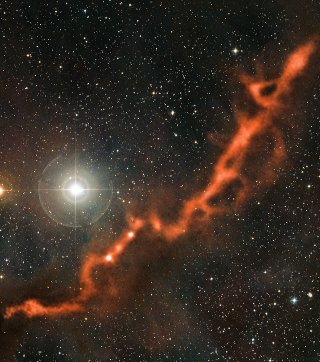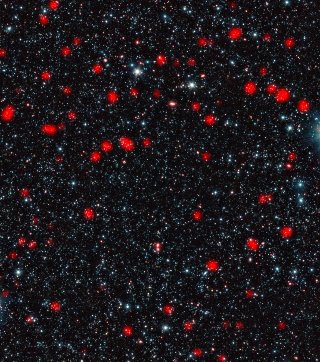
Interstellar medium in our Galaxy
APEX is very often used by scientist to study the physical processes taking place in the interstellar medium within our Galaxy, and also in other nearby galaxies like the Magellanic Clouds. Two of the main topics of research are the star and planetary formation processes, the mechanisms driving the formation of new stars and solar systems. These processes take place in regions of the space relatively dense of gas and dust, the so-called molecular clouds. Deep inside them, particles are well shielded from the high-energy photons, and they can interact and aggregate to form complex molecules. In this cold environment of few tenths of Kelvin, these molecules rotate, emitting radiation in specific frequencies in the sub-mm, which APEX can detect with its heterodyne instruments.

Other galaxies and the universe
Because most of the stellar light emerging from massive star formation regions is immediately absorbed by the surrounding dusty clouds, even the most luminous starburst galaxies are difficult to observe at optical wavelengths. The absorbed radiation is re-emitted by the dust as long-wavelength infrared radiation which can easily escape the star forming regions, but cannot cross the Earth’s atmosphere. However, for very distant objects this radiation is red-shifted to submillimeter wavelengths. This makes it accessible from the ground at very few places, such as Chajnantor. In this way APEX has been able to observe the light from distant galaxies, helping astronomers to know more about the star formation in the far Universe.